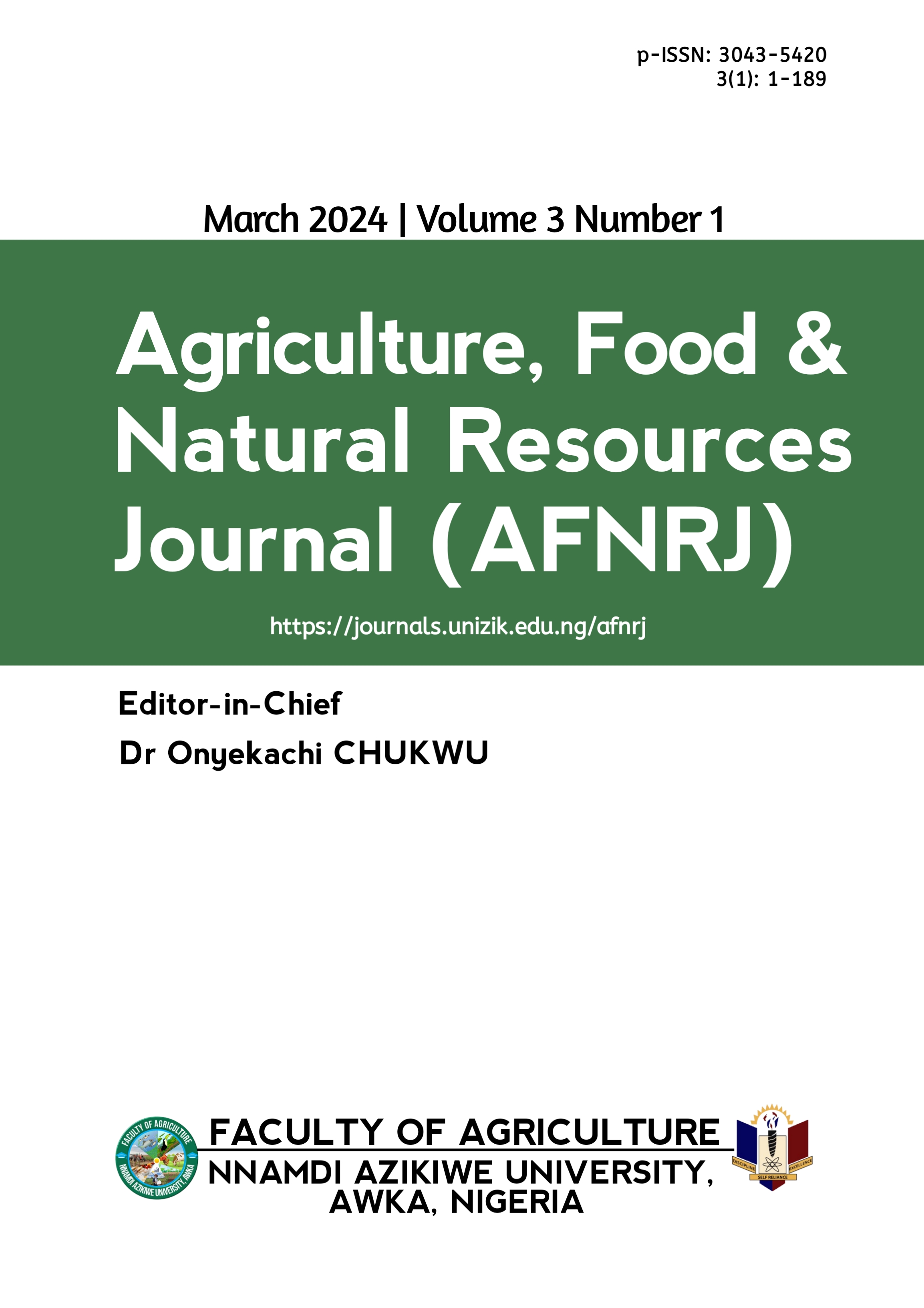Survey of tree species processed by sawmills in south-south zone of Nigeria
DOI:
https://doi.org/10.5281/zenodo.14017337Keywords:
Forest, Timber processing, Trees, UtilizationAbstract
The south-south zone of Nigeria, enriched with rain forest with choice timber species, has numerous sawmills. Tree species processed in sawmills depend on their uses within the locality. Hence the study surveyed tree species processed in sawmills and their uses in the south-south zone of Nigeria. Twenty sawmills each were randomly selected from Akwa Ibom, Bayelsa, and Delta States in the South-South zone of Nigeria. Data on the socio-economic profile of sawmillers, timber species processed, dimensions, and uses were obtained using a structured questionnaire. Data was analyzed using descriptive statistics such as frequencies, means, and percentages. Most of the sawmillers were male (93.3%), with a mean age of 43.0±0.98, married (96.7%), with mean years of experience of 15.3±0.89 and a capital base of 9190000±505471.2. Daniella olivera was the most sawn and Ricinodendron heudolotii (35.0%), Chrysophyllum albidum (50.0%), and Lophira alata (45.0%) were the least sawn in Akwa Ibom, Bayelsa and Delta State, respectively. In the south-south zone of Nigeria, Daniella olivera (96.7%) and Ricinodendron heudolotii (11.7%) were the most and least sawn, respectively. These species were processed and used for construction and furniture work. Numerous species are exploited and processed by sawmills in the South-South zone of Nigeria. Investment in private plantation establishments, afforestation, and sophisticated processing machines is paramount for the sustenance of forests and sawmills in the South-South zone of Nigeria.
Downloads
Published
Issue
Section
License
Copyright (c) 2024 Oghenekevwe Abigail OHWO

This work is licensed under a Creative Commons Attribution 4.0 International License.
which permits unrestricted use, distribution, and reproduction in any medium, provided the original author and source are credited.
Authors retain the copyright of their published work in the AFNRJ.





